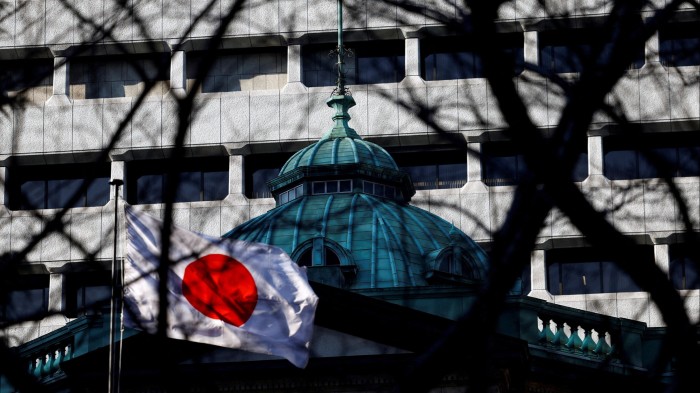Stay informed with free updates
Simply sign up to the Sovereign bonds myFT Digest — delivered directly to your inbox.
Japan’s borrowing costs have soared to a 14-year high as rising interest rates, sustained inflation and a potential wave of wage increases this spring fuel a relentless sell-off in its government debt.
Benchmark 10-year Japanese government bond yields, which move inversely to prices, touched 1.31 per cent on Friday, having risen another 0.21 percentage points already this year following a big jump in 2024.
The Bank of Japan decided last month to lift its short-term interest rate to a 17-year high of about 0.5 per cent. Rising inflation expectations have fuelled bets that the next rate increase could come sooner than expected, pushing up yields to multiyear highs. Core inflation in December rose 3 per cent, the fastest annual pace in 16 months.
“[For Japan] inflation is for real this time,” said James Novotny, an investment manager at Jupiter Asset Management.
“It’s domestically driven, not simply imported from the rest of the world,” he added, citing wage growth in December that touched its highest level in 30 years.
“It feels like we are closer to the start, than towards the end of the BoJ hiking cycle,” he said.

The shift higher in Japanese 10-year yields after years languishing near or below zero has ricocheted across global financial markets, as domestic investors find it more attractive to park their cash at home. That has raised anxiety that Japanese investors will fuel sell-offs elsewhere as they dump overseas investments such as Eurozone bonds.
While moves in Japanese government bond prices are eye-catching, traders say the underlying shift is even more historic as a once-frenetic market is resurrected from years of restraint by the central bank. The BoJ until last year had pursued a policy of yield curve control, setting a hard limit on the yields of 10-year bonds.
Analysts have argued that Japan has finally settled into a rate-rising cycle for the first time in decades, with some expecting the BoJ to raise them later this year and then again in 2026 until the policy rate reaches 1 per cent.
But last week, comments from BoJ board members — one of them particularly hawkish — intensified speculation that the central bank could raise rates in July and that the rate at which it is expected to stop cutting, the so-called terminal rate, might be higher than 1 per cent.
Since last month’s central bank meeting swaps traders have pulled forward their expectations of the next quarter point rate increase and are putting an 80 per cent chance on a July rise, according to levels implied by derivatives markets.
Kaspar Hense, a fund manager at RBC Bluebay Asset Management, said the BoJ had been “behind the curve” keeping up with wage pressures that he thinks would continue to be strong this year.
Hense believes this would “drag” Japanese bond yields higher across the board, but particularly the 10-year benchmark debt.







